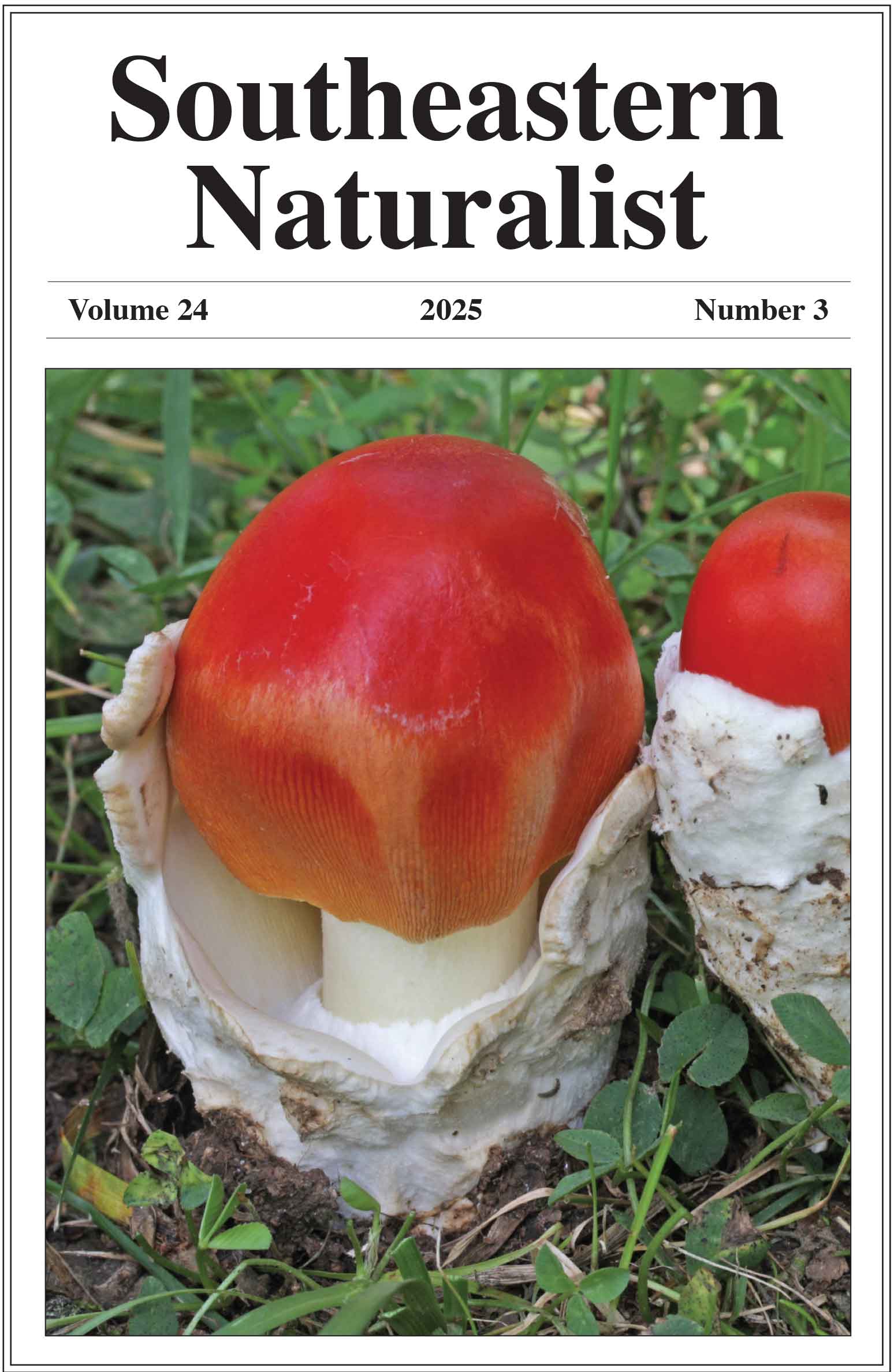Using Camera Traps to Estimate Site Occupancy of Invasive Argentine Black and White Tegus (Salvator merianae) in South Florida
Samantha N. Smith1,7, Melissa A. Miller1,*, Hardin Waddle2, Sarah Cooke3, Amy A. Yackel Adams4, Andrea Currylow4,5, Kevin Donmoyer6, and Frank J. Mazzotti1
1University of Florida, Department of Wildlife Ecology and Conservation, Fort Lauderdale Research and Education Center, 3205 College Avenue, Davie, FL 33314. 2US Geological Survey, Wetland and Aquatic Research Center, 7920 NW 71 Street, Gainesville, FL 32653. 3Environmental Resources Management, 180 Admiral Cochrane Drive Suite 400, Annapolis, MD 21401. 4US Geological Survey, Fort Collins Science Center, 2150 Centre Avenue, Fort Collins, CO 80526. 5Current address - University of North Carolina Wilmington, Department of Biology and Marine Biology, 601 South College Road, Wilmington, NC 28403. 6National Park Service, Everglades National Park, Homestead, FL 33034. 7Current address - Clemson University, Department of Forestry and Environmental Conservation, 261 Lehotsky Hall, Clemson, SC 29634. *Corresponding author.
Southeastern Naturalist, Volume 23, Issue 4 (2024): 425–447
First published early online: 4 December 2024
Abstract
The introduction of nonnative species is a leading cause of biodiversity loss. Many invasive species are cryptic or elusive in nature and therefore often evade detection, complicating their management. Occupancy modeling can reveal the presence and spread of invasive species over time and therefore has important management implications. Camera traps can be used to estimate occupancy, or the proportion of sites that are occupied by a target species. During a 4-year study (2016–2020), we used camera traps both with and without lures to detect the presence of invasive Salvator merianae (Argentine Black and White Tegu) at sites in Miami-Dade County, FL. Our results from a multi-season occupancy model revealed that a quadratic effect of ordinal day was the best predictor of detection, with a peak in June, while occupancy was correlated with distance to landscape features that may facilitate tegu movement. We did not detect any large-scale changes in occupancy over the course of our study. We also discovered that the use of lures with camera traps did not impact detection, indicating fewer resources would be required from invasive species managers for effective monitoring. Understanding the factors that impact occupancy and detection probabilities can inform surveillance and removal efforts, leading to more efficient management strategies.
![]() Download Full-text pdf (Accessible only to subscribers. To subscribe click here.)
Download Full-text pdf (Accessible only to subscribers. To subscribe click here.)
Access Journal Content
Open access browsing of table of contents and abstract pages. Full text pdfs available for download for subscribers.
Issue-in-Progress: Vol. 24( 4) ... early view
Check out SENA's latest Monograph and current Special Issue in progress:













 The Southeastern Naturalist is a peer-reviewed journal that covers all aspects of natural history within the southeastern United States. We welcome research articles, summary review papers, and observational notes.
The Southeastern Naturalist is a peer-reviewed journal that covers all aspects of natural history within the southeastern United States. We welcome research articles, summary review papers, and observational notes.